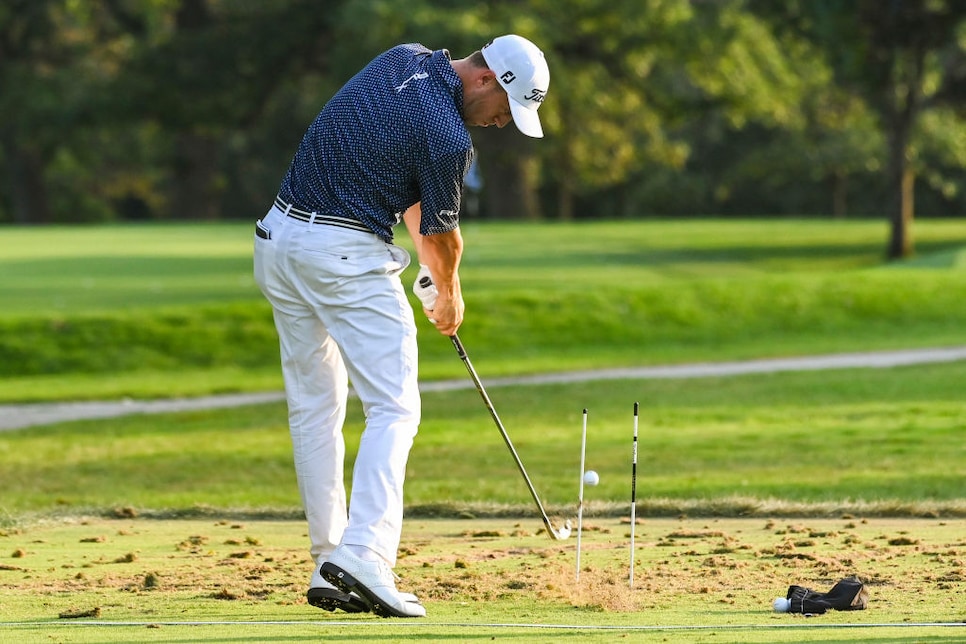Hit more wedges!
Justin Thomas' '80 percent' warmup rule — and why it can help the rest of us

Keyur Khamar
There are lots of things pros do different—well, better—than the rest of us. And perhaps king among them is warming up.
Sure, I'm sure there are golfers out there who take their warm ups very seriously. But most of us don't. We roll up to the range a few minutes before our tee times—if we do at all—hit a load of 7-irons then bash some drives into the distance, and call it a day.
It couldn't be more different than what pros do. They'll often start them hours before they even get to the course. They'll hit the gym, do some cardio to get their heart pumping, some basic mobility exercises. Then, when they do get to the driving range, they'll work their way up slowly and methodically through their bag.
I was reminded of this the other day when I was poking around Golf Digest Schools (which you can check out right here), and came across an interesting tidbit from Justin Thomas' Undercover Lessons about how he spends a majority of his time on the range.
80 percent: Hitting wedges and short irons
The first shots JT hits during his warmup range sessions are with his wedges. He'll start with literal chip shots, then slowly work his way up through his bag.
How slowly, you ask? Really slowly.
“I spend probably 80 percent of my warmup from 8-iron down," he said. "I’ll hit all of my wedges, and I’ll hit a lot of 9-irons."
JT explains that hitting lots of wedges and short irons helps him build a good golf swing rhythm for the day. He's not in danger of swinging too hard with his wedges, and he'll practice hitting different shots—draws and fades, mostly—with his short irons because it allows him to focus on being precise.
"When I have a 4-, 5- or 6-iron I'm not trying to hit it close, I'm trying to hit it on the green and if I happen to make a long putt then great," he says. "I would rather be dialed in with my shorter irons."
20 percent: Course-specific shots with longer clubs
It's only at the very end of his range session that JT abandons his short irons. And when he does, it's usually for the clubs he'll know he'll need to hit well on the course.
"A couple of 6-irons, a couple of 4-irons, a couple of 3-woods, drivers then go," he explains.
It's almost the exact opposite approach to what the rest of us do. But in spending more time hitting the shorter clubs, he puts himself in a better spot to succeed when the time comes on the course. It's an approach the rest of us should probably try, the next time we have the chance.

